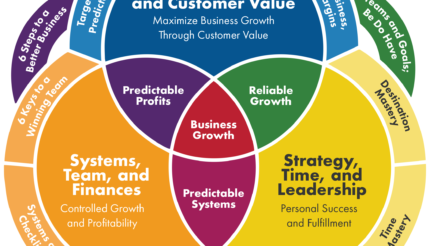Better Time Management For Your Business
There are three key aspects to effective time management for business owners…
- Personal organisation
- Keeping a project list
- Redefining your own job, continuously, as the business grows
Personal Organisation
Personal time management is closely related to paper management. The problem of paper is basically the decision-making, and that’s where trouble begins — “I’ll think about that tomorrow.”
Solution: A system that’s been created called TRAF. For each piece of paper, choose one of the four TRAF options…
- Toss it out there and then
- Refer it to someone else to take care of the matter
- Act on it yourself
- File it in a convenient place for future action or reference.
With this system, you avoid the constant firefighting that consumes the time of so many business owners. When you deal with a problem as it comes up, you prevent important decisions from piling up to the point that you feel overwhelmed.
Learn to find a little time for your personal priorities by going into an empty room in the office, a coffee shop or the library.
It may also be possible to get some quiet time early in the morning or after business hours in the evening. Use your travel time for thinking, writing and reading.
To deal with telephone calls that cause constant interruptions, think of them as raindrops that keep the business blooming. Don’t let them bother you — just keep them as short as possible.
Rule of thumb: When returning calls, you’ll find people less chatty just before lunch or the end of the day.
Project Lists
Anyone who runs their own business has what seems like a million projects going on at the same time — some are inside the company, some outside.
With so much happening, it’s easy to lose track of how close to completion a particular project is. Nothing is more embarrassing than to have a customer call and ask about a project you’ve forgotten about.
Solution: Create a simple form listing the name of the project, the initials of the person or persons working on it, the date of referral and the date of expected completion.
Also, you should break large or complicated jobs into pieces with benchmarks along the way.
Redefining Your Role
In the beginning, every business owner must take on many tasks, including even sweeping the floor. But as the operation grows and matures, hiring others to take on responsibilities becomes critical to healthy growth.
A trap many business owners fall into Is failing to redefine continuously, your changing role in the organisation. When that happens, you end up with much more than you’re able to accomplish efficiently.
Solution: Take an honest look at your workload and identify tasks that you don’t do well. You may be digitally gifted but possess little financial savvy. Or, you may be an excellent “people person” but hopelessly disorganised.
The real measure of a successful business owner is in knowing when to complement his/her own skills by hiring others who can take over certain key roles.
Example: A company who had founded a newsletter for bankers saw the newsletter grow to the point where he had 12 full-time employees.
As time went on, he found himself increasingly frustrated because the demands of being editor and publisher left him virtually no time to spend on sales and marketing.
After rethinking the needs of the business and in order to assure the publication’s future, he decided to turn the editorial duties over to a trusted associate and concentrate his own time on sales and marketing.
That move immediately cleared the logjam of work on his desk… freed his mind from constant worry about getting everything done, and ultimately led to a growth spurt fuelled by new, highly successful marketing campaigns.





